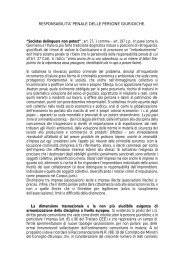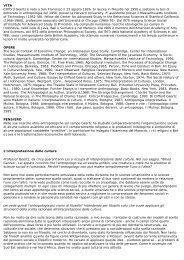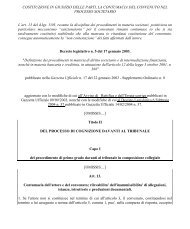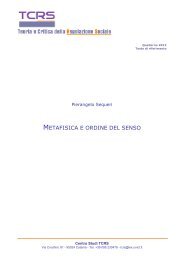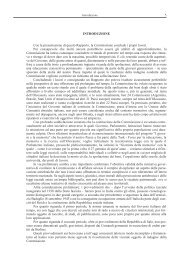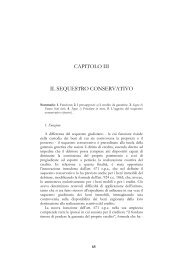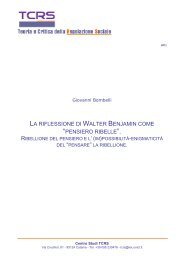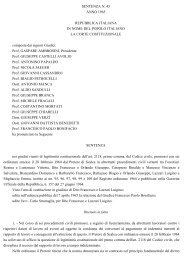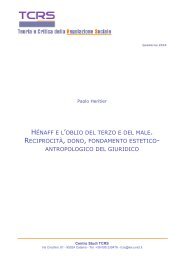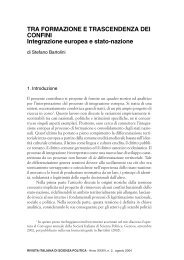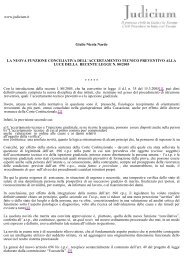FOGLI DI LAVORO per il Diritto internazionale 3 ... - Giurisprudenza
FOGLI DI LAVORO per il Diritto internazionale 3 ... - Giurisprudenza
FOGLI DI LAVORO per il Diritto internazionale 3 ... - Giurisprudenza
You also want an ePaper? Increase the reach of your titles
YUMPU automatically turns print PDFs into web optimized ePapers that Google loves.
<strong>FOGLI</strong> <strong>DI</strong> <strong>LAVORO</strong> <strong>per</strong> <strong>il</strong> <strong>Diritto</strong> <strong>internazionale</strong> 3/2008<br />
constituted an interference with the applicant associations' right<br />
to manifest their religion or belief, as guaranteed by Article 9 §<br />
1 of the Convention.<br />
b) Whether the interference was prescribed by law<br />
85. The remaining applicant associations maintained that the<br />
Government's information campaign had had no legal basis.<br />
They considered that the principle of proportionality did not set<br />
sufficiently clear limits to the exercise of the Government's<br />
discretionary power where interferences with the freedom of<br />
religion derived directly from other constitutional rights.<br />
86. The Court reiterates its settled case-law that the<br />
expression “prescribed by law” requires firstly that the<br />
impugned measure should have a basis in domestic law. It also<br />
refers to the quality of the law in question, requiring that it be<br />
accessible to the <strong>per</strong>sons concerned and formulated with<br />
sufficient precision to enable them – if need be, with appropriate<br />
advice – to foresee, to a degree that is reasonable in the<br />
circumstances, the consequences which a given action may<br />
enta<strong>il</strong> and to regulate their conduct (Gorzelik and Others v.<br />
Poland [GC], no. 44158/98, § 64, ECHR 2004-I).<br />
87. Further, as regards the words “in accordance with the<br />
law” and “prescribed by law” which appear in Articles 8 to 11<br />
of the Convention, the Court observes that it has always<br />
understood the term “law” in its “substantive” sense, not its<br />
“formal” one (De W<strong>il</strong>de, Ooms and Versyp v. Belgium,<br />
judgment of 18 June 1971, Series A no. 12, p. 45, § 93). “Law”<br />
must be understood to include both statutory law and judgemade<br />
“law” (see, among other authorities, The Sunday Times<br />
v. the United Kingdom (no. 1), judgment of 26 Apr<strong>il</strong> 1979,<br />
Series A no. 30, p. 30, § 47, and Casado Coca v. Spain,<br />
judgment of 24 February 1994, Series A no. 285-A, p. 18, § 43).<br />
In sum, the “law” is the provision in force as the competent<br />
courts have interpreted it.<br />
88. The Court further reiterates that the scope of the notion<br />
of foreseeab<strong>il</strong>ity depends to a considerable degree on the content<br />
of the instrument in question, the field it is designed to cover<br />
and the number and status of those to whom it is addressed. It<br />
must also be borne in mind that, however clearly drafted a legal<br />
provision may be, its application involves an inevitable element<br />
201



